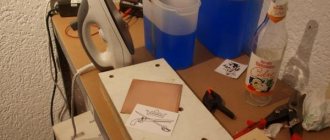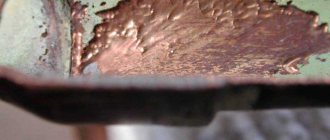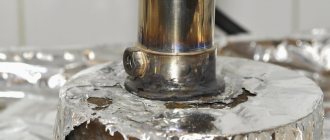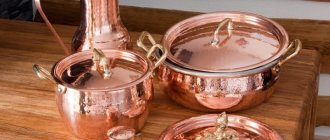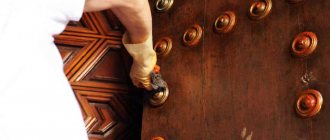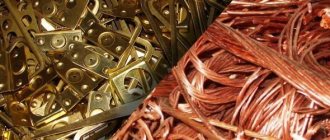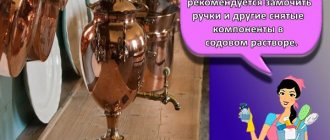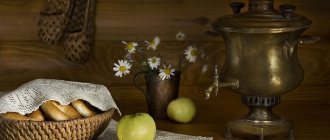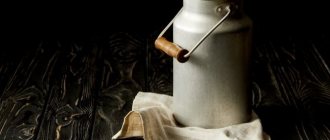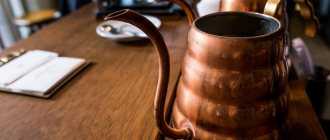How to clean copper? The relevance of this issue is explained by the fact that products made from this metal have been used by humanity for many centuries. For a long time, the value of this metal was so high that it was equal to gold. The development of technology has led to the fact that it was possible to significantly reduce the cost of copper production. This made it possible to make not only jewelry from this metal, but also dishes and interior items. The high popularity of this metal and alloys based on it is explained not only by its decorative effect, but also by its unique characteristics - high ductility, thermal conductivity, corrosion resistance, etc.
No one wants to use oxidized copper cookware.
Why do copper cookware need to be cleaned regularly?
Copper is one of the metals that can tarnish and oxidize.
For prevention, each time after using kitchen utensils, they must be thoroughly washed and wiped dry, and also avoid direct exposure to direct sunlight.
Regular cleaning will promptly eliminate the formation of plaque and the release of toxic substances.
This regular maintenance will extend the life of the copper.
How to clean copper from green deposits?
Green plaque on copper releases toxins and must be removed. Not all means can cope with its elimination.
There are several ways to remove corrosive plaque:
- The carbonated drink “Coca-Cola”, due to the presence of phosphoric acid in it, will clean and get rid of any contamination, especially green deposits. Pour this sweet fizzy drink into a small glass container and place a pot or frying pan in it for several days. This is a very original and at the same time effective method;
- ethyl alcohol mixed with turpentine and oxalic acid will also cope with green plaque. It is enough to saturate a soft sponge or rag with this liquid and apply it to the contaminated surface;
- Apply white chalk mixed with kerosene to a mushy state to the area of contamination or plaque formation. This is a great way to rub and add shine to a copper piece.
How to clean copper utensils from blackness?
Black plaque is also considered toxic. Requires mandatory elimination. However, such kitchen utensils can no longer be used for cooking.
To help get rid of blackness:
juice from half a lemon will remove the blackness if you rub it on the product, then rinse under the tap and wipe dry. If you don’t have lemon at home, you can replace it with citric acid, diluted with water to a paste.
hot soap solution diluted in a container. It is enough to immerse the dishes in it for a short amount of time. Then rinse lightly under running water and wipe dry.
with an ammonia solution . This procedure only needs to be carried out with caution, always in the open air to prevent poisoning from ammonia fumes. It is enough just to wet the sponge and wipe the product with it.
How to clean copper dishes from white deposits?
The white coating formed due to oxidation must be removed.
Several proven and reliable methods will help you quickly deal with it:
Tomato paste or ketchup, due to its high acid content, is good to use to remove white deposits and to give copper a reddish tint. It is enough to mix two tablespoons of paste with one tablespoon of salt and apply the resulting mixture to the product for 10 minutes with a sponge. Then rub in a circular motion over all the outer walls, remove the residue with a paper napkin.
glass of any fermented milk product , it is best to use sour milk, mix with 1 tablespoon of salt, soak a piece of flannel cloth or microfiber cloth with the resulting mixture. Rub the surface until the white coating is completely removed.
amidosulfuric acid , used for heavily ingrained plaque. When using it, it is important to follow safety precautions. This powder is quite aggressive, but quickly cleanses and adds shine to copper.
Cleaning copper with ammonia
Soak a rag in ammonia and apply it to the copper product. Then wipe with a clean rag to remove the ammonia. For a better effect, chalk chips are added to the alcohol. It mechanically scrubs and absorbs dirt.
Vaseline oil
Small specimens can be cleaned with oil. Vaseline is most suitable for this purpose. Before cleaning an antique copper coin, place a container of oil on the tile. To clean a coin, place it in a boiling oil liquid over low heat. In this way, you can quickly get rid of stains, rust and oxides on a collectible item. The oil has a very high boiling point, which speeds up the procedure. At the end of the process, the item is washed with ethyl alcohol.
Soda solution
You can use soda solutions on low-quality old objects that have good resistance to destruction. Before cleaning copper coins at home, add baking soda (2 tbsp) to a bowl and add plain water (5 tbsp). The resulting consistency after mixing should look like a slurry. This mass is applied to the surface of the product with small rubbing movements. Processing time will depend on the degree of contamination of the items and may take several weeks. You can speed up the procedure with additional brushing with a toothbrush. After the process is completed, the items are washed with running water and dried.
After cleaning your items at home, you need to dry them properly. For these purposes, paper towels are suitable, which should be folded in several layers and covered with them on both sides of the product. It is recommended to use only soft towels to avoid damaging an antique item or coin. Drying can be carried out using a drying cabinet heated to 100 °C. To slow down oxidative processes, the product is periodically wiped with crumpled black and white newspaper. Everyone has to choose how to clean copper items at home individually.
"Coca Cola"
Children's favorite drink can rid the surface of copper items of greenery, as well as other contaminants. To do this, coins are placed in a small container and filled with sweet fizzy drink. It is advisable to use glass containers. After a few days, all dirt and oxides will be successfully cleaned and things will acquire an attractive appearance. This effect occurs due to the presence of orthophosphoric acid in the effervescent drink. It is this that helps clean the metal from oxidizing greens and other contaminants. To speed up the process, you can place the container on a warm radiator or use another source of constant heating. This is the most original way for those interested in how to clean copper at home.
Cleaning copper with phosphoric acid
To clean copper from rust, phosphoric acid is used. The product is dipped in a 15–30% solution of orthophosphoric acid and applied with a brush or spray. Leave for a few minutes to take effect. Clean off plaque with a cotton cloth. If necessary, repeat the procedure.
Citrus
For convenience, you can cut off half of a citrus fruit and rub it on the coating. Having eliminated visible oxides and dirt, all that remains is to rinse the product with water.
Lemon juice
At home, you can use freshly squeezed lemon juice for cleaning. Soak a rag in the juice and wipe the product.
Cleaning with ketchup
This unexpected solution has proven itself in cleaning copper products from black deposits. Apply a generous amount of ketchup or tomato paste to the metal. Leave for an hour and wipe with a cotton rag. The fruit acids contained in tomatoes will not only get rid of plaque, but also restore the brightness of the metal.
Amidosulfuric acid
A solution of amidosulfuric acid effectively removes blackness and other types of contaminants from copper items. To perform cleaning, moisten a rag in an acid solution and rub the surface until the desired result is achieved.
Dry cleaning
The dry cleaning method involves the use of soft abrasives and is used in cases of heavy contamination. Chalk chips or coarse flour are used as abrasives. Dry abrasive is applied to a flannel cloth and polished in a circular motion.
If you clean copper using any of the above methods, strictly adhere to safety rules, carry out all work wearing protective gloves, and be sure to wear a respirator when working with acetic acid.
What is brass?
Brass is a metal alloy of copper and zinc, sometimes with admixtures of tin, nickel, lead and other elements. It is often confused with bronze due to the presence of copper in the composition. This component in the alloy is responsible for the characteristic golden-brown hue that is inherent in these metals.
The scope of application of this metal is incredibly wide. Brass is used in the manufacture of dishes, car parts, pipes and other household items. Due to its resistance to rust, it is in demand in the production of plumbing fixtures.
The alloy is also used in jewelry. With certain proportions of copper and zinc, maximum resemblance to gold can be achieved. As a result, jewelry made from such a metal will be significantly inferior in cost to gold, but will look no worse.
Determining the authenticity of the metal is very simple: you just need to bring a magnet to the product. Real brass will not be attracted to it. Due to this property, this metal is often used in the manufacture of compasses.
Unfortunately, with improper and irregular care, the alloy can lose its original appearance, acquire plaque, blacken and oxidize. In this article we will tell you what is the best way to clean brass, and also talk about how to avoid various contaminations in the future.
Mechanical cleaning of copper products
This type refers to professional cleaning and involves pre-soaking in distilled water. Then it is carefully impregnated with synthetic resin to strengthen the patina and prevent scratches during further cleaning.
Craftsmen use needles, brushes with minimal rigidity, manual and mechanical scrapers with different tip shapes, as well as metalworking tools.
This process is considered very long, painstaking, requiring patience and care.
Precautions when cleaning copper
When cleaning with aggressive agents, safety precautions must be observed:
- read the instructions carefully;
- use rubber gloves;
- if necessary, wear a protective mask to avoid burns to the respiratory tract caused by cleaning agent vapors;
- when mechanically cleaning copper, use plastic goggles to protect your eyes from foreign bodies;
- in case of contact with the skin or eyes, immediately rinse the area with water or seek medical attention;
- To avoid damage to copper, it is not recommended to leave the product in acid for a long time, and also to use iron brushes and abrasive substances.
What not to do
To avoid damaging the surface of the products, the following actions are prohibited:
- cleaning with abrasive materials;
- the use of chemicals that contain acids;
- heating objects in the presence of oxidizing substances or environments;
- removal of protective varnish coatings by chemical or mechanical means;
- leave copper objects in dusty places for a long time without carrying out wet cleaning.
It is important to strictly follow safety precautions when cleaning, especially when using strong chemicals. To remove contaminants, different cleaning methods can be used.
Folk remedies
Brass has very ancient origins. It was admired by the ancient Romans and widely used by recognized masters of the East. And it is not surprising that by now a collection of folk methods for purifying this alloy has been collected
And therefore, before cleaning the product using professional products, you should pay attention to recipes created by observing and correcting previous errors:
For this recipe you need to knead the dough: 200 g of flour and vinegar with water 1:1.
The consistency of the dough should be slightly denser than pancake dough. The resulting product is coated with plaque and left to dry. After the dough has completely dried, treat the surface with a soft cloth. The vinegar contained in the dough will dissolve the oxides, and the flour will absorb them.
This cleaning method is very interesting; it was widely used in Rus'.
To do this, cranberries, which contain citric and oxalic acid, are rubbed into the product, thereby effectively dissolving the oxide. After leaving for 15 minutes, remove the cranberries and wash with water.
This method is based on the effect of carbon dioxide on dense plaque.
Add 1 tsp to 200 ml of buttermilk. salt, an active reaction begins, as a result of which carbon dioxide is produced - the strongest solvent of the oxide. Wipe the problem areas with the composition and wash off the residue with water.
For minor stains, a piece of lemon dipped in fine salt will help remove stains.
Cleaning brass at home is not as difficult as it seems at first glance. It is much easier and safer for a unique alloy when a person understands the properties of brass and uses detailed recommendations.
Caring for Copper Cookware
There are several rules for the care and preservation of external and internal coatings:
- store dishes only in a dry cabinet, as humidity and heat contribute to the process of destruction and blackening;
- cannot be washed in the dishwasher, even at minimum temperature;
- do not keep empty dishes on a working stove;
- To avoid scratches, it is advisable to use wooden or plastic kitchen utensils;
- abrasive detergents containing chlorine, as well as metal brushes or sponges, are prohibited;
- Copper cookware does not like sudden temperature changes, so pouring boiling water into it is not recommended;
- food containing a large amount of acids, for example: vinegar, fruits or tomatoes - it is better to put them in another container.
The healing properties of copper have long been proven, but time has not been kind to it. Therefore, only with proper storage, cleaning and care will such dishes last a long time and delight you with their incredible color and radiant shine.
Video
We recommend watching videos that show the best methods for cleaning brass products:
Graduated from the economics department of the Aviation University. Married, has a daughter. Loves to play musical instruments and spend time in pleasant communication. She always strives to learn something interesting and master a new craft. Loves to cook for the whole family. Life motto: “Never give up!”
Found a mistake? Select the text with the mouse and click:
Stretch ceilings made of PVC film can withstand from 70 to 120 liters of water per 1 m2 of their area (depending on the size of the ceiling, the degree of its tension and the quality of the film). So you don’t have to worry about leaks from neighbors above.
Fresh lemon is not only suitable for tea: clean dirt from the surface of an acrylic bath by rubbing with half a cut citrus, or quickly wash the microwave by placing a container of water and lemon slices in it for 8-10 minutes at maximum power. The softened dirt can simply be wiped off with a sponge.
Threads made of gold and silver, which were used to embroider clothes in the old days, are called gimp. To obtain them, the metal wire was pulled for a long time with pliers to the required fineness. This is where the expression “to drag out the rigmarole” came from - “to do long, monotonous work” or “to delay the completion of a task.”
Before removing various stains from clothing, you need to find out how safe the selected solvent is for the fabric itself. It is applied in a small amount to an inconspicuous area of the item from the inside out for 5-10 minutes. If the material retains its structure and color, you can move on to stains.
The habit of using an automatic washing machine “sparingly” can lead to the appearance of an unpleasant odor in it. Washing at temperatures below 60℃ and short rinses allow fungi and bacteria from dirty clothes to remain on internal surfaces and actively multiply.
If your favorite things show the first signs of gestation in the form of untidy pellets, you can get rid of them using a special machine - a shaver. It quickly and effectively shaves off clumps of fabric fibers and returns things to their proper appearance.
The dishwasher cleans more than just plates and cups. You can load it with plastic toys, glass lamp shades and even dirty vegetables, such as potatoes, but only without using detergents.
The easiest way to remove scale and carbon deposits from the soleplate of the iron is with table salt. Pour a thick layer of salt onto the paper, heat the iron to maximum and run the iron over the salt bed several times, applying light pressure.
There are special traps to combat moths. The sticky layer with which they are covered contains female pheromones that attract males. By sticking to the trap, they are eliminated from the reproduction process, which leads to a decrease in the moth population.
Source
Effectively cleaning copper coins
Previously, small coins were made from a copper alloy. Today they are considered a rarity. Since a film often forms on the surface of coins, this reduces their value. To remove oxidation and return items to their original appearance, antique dealers use industrial cleaning products. With their help, you can not only return coins to their original condition, but also clean a copper pot or an antique basin.
Ways to clean copper at home:
- A pronounced yellow coating on coins indicates contact of the products with a lead surface. Such items can be treated with acetic acid solution.
- Citric acid powder will help remove the bright green film.
- Remove red deposits with a liquid containing ammonia.
Before cleaning a copper basin, dishes or coins that are considered rare, you need to study the recommended treatment time and the amount of active substance. If you overexpose a copper object in Trilon, acid, or rub it with sulfur ointment in excess, you can ruin antique items.
Boiling coins in soda solution
Baking soda and copper interact effectively with each other, returning the shine to metal products. To prepare the solution, take 1 liter of water and 10 tbsp. l. baking soda. You will also need a small saucepan and an old toothbrush.
The solution should be poured into a container and the products should be lowered into it. They should be covered with at least 2 cm of the solution. Place the pan on the fire and boil the contents for 20-30 minutes. Then you need to let the coins cool. Already cold products are treated with a toothbrush, removing remaining dirt.
Trilon B
Trilon B is another option for processing copper at home. This is a ready-made chemical mixture that is sold in jewelry stores. It is designed specifically for copper surfaces, does not destroy the metal, like some acids, and carefully cleans it of oxide.
Metal products are placed directly into a jar of the substance using plastic tweezers for 10-20 minutes. Then they are taken out and washed. If the oxide layer is too thick, the procedure will have to be repeated several times.
Kefir, vegetable oil
Kefir contains non-aggressive acids that gently clean the copper surface, leaving a light patina. To carry out the manipulation, all items should be placed in glass containers and filled with fermented milk product. Keep copper products in kefir for 50-60 minutes. Then you need to take them out, wash them under running water and dry them.
When using vegetable oil, you need to additionally take dishwashing detergent, a deep saucepan and plastic tweezers. Pour sunflower or olive oil up to 2 cm high into the bottom of the container and boil. Using tweezers, lower the coins into the pan and keep them on the fire for 10-20 minutes. Then remove the copper products, rinse with dishwashing detergent, wipe and dry.
Citric acid, vinegar
Dark stains on ancient coins can be easily removed with vinegar. First, prepare a solution with 0.5 liters of water, 1.5 tbsp. l. 9% vinegar and 1.5 tbsp. l. rock salt. Copper objects are dipped into the liquid and sent to the fire. It is advisable to boil the coins for 5-10 minutes, then remove them, rinse and wipe dry with cotton cloth.
If desired, vinegar can be replaced with citric acid or freshly squeezed juice. If lemon is used, the fruit should be cut in half and the pulp should be rubbed onto the copperware. Leave them in this state for 10-15 minutes, then rinse under running water.
If there is still heating
One of the most effective schemes is to “boil out” the burnt residue by pouring boiling water over it or simmering it on the stove for some time. The softening process in this case is faster, but if it is quite safe for an aluminum saucepan or stainless steel basin, enamel cookware can react to a sharp temperature change by cracking the enamel and quickly deteriorating. That is why it is recommended to heat the enameled water gradually by pouring warm water and bringing it to a boil on the stove.
Is it possible to intensify this process? Quite! A solution of salt, soda or citric acid instead of plain water will allow you to clean burnt jam from the pan a little faster. Just keep in mind that baking soda can cause aluminum to become covered with dark spots, and long-term contact with salt also harms this type of cookware. For stainless steel and enamel, some even prepare an explosive mixture of soda, salt and citric acid: this way the burnt jam at the bottom of the pan will certainly have no chance!
Sometimes when boiling carbon deposits on the stove at home, an onion cut in half is added to the water. They say that the effect is sometimes even better than using special products.
But as for heating vinegar, this is a controversial issue. Many people boil things in vinegar to make things white or try to clean metal utensils with a boiling solution, but we want to remind you that when heated, vinegar begins to release harmful substances into the air, which can affect your well-being. Be careful, and if you choose to boil with a vinegar solution, at least ventilate the room well and do not stay in it for those 10-20 minutes while the burnt substance “boils down.”
How to clean a copper pot inside and outside?
The outer surface of the Turk can be cleaned using any of the methods presented above.
If you do not have experience working with aggressive chemicals and acids, use accessible and safe methods.
On the inside of the Turks, it is recommended to use softer substances so as not to damage the coating. For example, soda or ketchup.
Calculate the use of chemicals depending on the degree of contamination
Video
We all know how it happens: I put a saucepan on the stove, went online... Fathers, the water has already completely boiled away! And okay, if there were potatoes or eggs in the pan, but what if you have to clean up burnt jam? And if it also leaked onto the stove, then we sympathize with you twice. It’s not easy to clean both dishes and equipment from a layer of burnt sugar, but don’t throw them away! So be patient and try the following tricks to make things easier for yourself.
Cleaning samovars and teapots
All methods are also suitable for cleaning copper samovars, teapots and Turks. It’s just that it’s a little more difficult to clean the inside, because limescale deposits appear there from boiling water. One proven method is to use potato peelings:
- After peeling the potatoes, leave the skins, wash them, pour them inside the dishes and pour boiling water over them.
- Boil water with potato peelings for three hours.
- Then drain the contents of the dishes and wash them in the usual way using detergent.
After such cleansing, you need to boil water in a copper bowl a couple of times, replacing it with a new one each time to remove any remaining plaque.
Another proven method is to use lemon zest. Skins from tangerines, oranges, and limes are also suitable. Then proceed like this:
- The skins are placed in the vessel, filling half the container with them. Instead of zest, you can take two packs of citric acid.
- Pour in a little water - do not fill it completely, otherwise the liquid will begin to splash out when boiling.
- Boil for half an hour, then drain the water and clean the walls of the product with a brush.
The procedure is repeated if necessary. You can also use store-bought products to descale teapots.
But detergents for washing machines and dishwashers are not suitable for copper cookware: they are more aggressive and can damage the copper surface. The selected purchased product is used strictly according to the instructions indicated on the package.
In the case of a samovar, it is recommended to disassemble it into its components before cleaning, since many different curved parts cannot be washed so easily by simple boiling.
If stains appear on copper utensils, you should not be upset; you can resort to different methods and means that give good results. It is quite easy to restore a copper surface to its former beauty.
Replacing varnish
If neither “tin” nor light means help, you will have to change the varnish. But don't be scared. There is nothing complicated about replacing this, it’s easy to do it at home:
- Lay out a waterproof film so that the removed varnish does not stain the floor. Put on a dressing gown or overalls.
- Take a special liquid intended for removing varnish, soak a brush in it and start moving it over the varnish. This is how you remove the varnish. Be sure to use a respirator and gloves, and do not light matches - nail polish remover is usually highly flammable.
- Now the brass needs to be polished. Use special products for this - polishes.
- Rub the polish into your jewelry and figurines, then polish until they begin to shine.
- Now is the time to start applying new polish. Distribute it over the brass surface in an even thin layer. It's best to do this with a brush. But if you’re not much of an artist, use cotton balls.
- Now wait until the varnish dries thoroughly.
- Wipe down your brass items with some soft, dry cloth.
If there is no polish on your brass, and nothing can be done to clean the alloy, then there is only one way out - contact a specialist.
And finally, a video “on topic”:
- How to remove pen marks from leatherette
- How to clean plasticine from clothes
- How to clean gold-plated silver at home
- How to clean salt from suede boots
Clean a copper basin at home
As a rule, a copper basin is used to make jam. Such dishes have good thermal conductivity, antiseptic properties, are safe for humans, and when cooking the jam practically does not stick to the walls.
If the jam is still burnt, the copper basin can be cleaned with vinegar dough. For this ancient method, you need to knead the dough by mixing flour and table vinegar. Next, the dough is rolled out thinly and placed on the dirt.
After the mixture dries, carefully remove it. The vinegar paste absorbs dirt, making the surface perfectly clean.
Common mistakes
The beauty and durability of copper cookware is attractive, but ignorance of basic rules for use and care can very quickly render it unusable.
The most common mistakes in using copper kitchen utensils that can lead to damage:
- leave an empty basin on the fire;
- pour hot water into an empty basin;
- use hard sponges, metal spoons and spatulas;
- throw salt into the water until it boils;
- after the basin is washed, it is left in a wet state;
- Clean the surface of copper kitchen utensils with harsh abrasives.
You can save a copper basin for making jam only if the utensils are cleaned and stored correctly. Knowing how to wash a basin, you will avoid many problems.
Cleaning with abrasive substances can damage the surface of the pelvis
How to restore shine
Having wiped off plaque and dirt from a copper product, you need to restore the original shine to maintain decorative properties. There are several polishing options that can be easily performed at home.
Crumpled newspaper
The easiest and most effective way to restore its original shine is to polish it with regular newspaper. You need to roll up a couple of sheets of newspaper into a ball and wipe the tarnished areas with it.
Constantly using this method, you can quickly restore the condition of the products.
Vinegar dough
A dough mixed from vinegar essence and wheat flour is suitable not only for combating stains, but also for polishing. The only difference is that to polish the dough you need to add a pinch of table salt. A mixture of these components is applied to the surface of the object and left until dry. To avoid damaging the coating, it is important to ensure that the salt particles are dissolved before application.
Hydrochloric acid solution
It is recommended to use hydrochloric acid in the most extreme situations. A powerful solution that restores shine after rubbing the surface. For safety reasons, when working with the substance, you need to wear protective gloves and a mask, and open the windows in the room for ventilation.
Kerosene and chalk
A mixture of kerosene and chalk chips is applied to a soft sponge and the metal coating is wiped until a characteristic shine is formed. This processing method is suitable for cleaning and finishing products.
Using toothpaste or powder
Abrasives, including toothpaste and powder, contain ingredients that remove tarnish from metal surfaces. The composition is applied to the darkened areas and rubbed in with light force with a soft sponge. Then all that remains is to rinse the residue with heated water and wipe the coating dry.
How to make copper products shine
Cleaning copper products to a shine is possible in the following ways:
- applying lemon juice, citric acid solution;
- polishing with special pastes;
- galvanic method, using copper as an anode;
- by heating a mixture based on citrus juices inside a copper container.
More complex ways to remove burnt marks
It is not known how they even thought of this, but it is also recommended to clean pots using such exotic substances as silicate glue or bleach! We warn you in advance: they are unlikely to be significantly more effective than the methods that we have already talked about, but if you have a craving for experiments, then you can give them a chance.
- It is recommended to remove strong burns by “boiling” the burnt jam in water with the addition of 2-3 tablespoons of soda and a small amount of silicate glue.
- You can also rub the bottom and walls of the dishes with a mixture of laundry soap shavings and PVA glue and leave for several hours to act.
- If you have cleaned the carbon deposits, but do not want to wipe away the dark traces of it, some housewives recommend boiling a pan or basin with a “Whiteness” solution, but we, as in the case of vinegar, do not recommend doing this because of the harmful fumes that will fill the air .
The faster you start getting rid of burnt marks, the less effort and time it will take. If you let the crust completely dry and harden, then you will have to “boil” the carbon deposits on the stove more than once, and you will need to soak the pan for days!
We are sure that it is quite possible to clean your favorite pan from burnt jam, and now you have all the effective ways to deal with such deposits in your arsenal.
Source
Useful tips and tricks for caring for copper items
It is worth adhering to the following recommendations to maintain the shine of copper products for a long time:
- To preserve the natural copper shine of objects for a long time, you can use a protective varnish coating. For example, cheap copper jewelry can be coated with clear nail polish. This method allows you to isolate the product from contact with the air atmosphere and human skin, which will preserve its shine for a long time. Besides nail polish, you can also use beeswax. This product can be found in relevant stores.
- Do not use abrasives or steel objects when cleaning copper metal as they are harder than soft copper and can severely scratch the product.
- Heat and humidity are the enemies of copper cookware, as they significantly accelerate their destruction and blackening. To avoid continued exposure to these factors, store the product under appropriate conditions, such as a dry, ventilated cabinet.
- It is not recommended to cook food containing a lot of acids in copper cookware at high temperatures. Products containing acids, such as vinegar, fruits, tomatoes and others, cause serious harm to copper products.
- Most decorative items are coated with a protective varnish layer. Such items should be washed only with warm water and soap and do not use abrasive materials or polish these items, as all this can damage the protective coating. In addition, products with a protective coating require special care, so it is recommended to follow the manufacturer's instructions.
- Some copper food utensils have a protective coating that must be removed before using the utensils for their intended purpose. There are two ways to remove the coating: place the product in boiling water with a small amount of baking soda, or thoroughly wipe the product with a cotton cloth soaked in alcohol or acetone, and then rinse under running water.
- Do not forget to wipe copper products with a damp, clean cloth, not allowing dust and dirt to accumulate on them.
Home methods for cleaning blackness on copper products should be used from time to time as needed, but you need to understand that the items will become thinner each time .
Sources
- https://hozzi.ru/chistka/chem-med
- https://hoznauka.ru/veshhi/dragotsennosti/kak-pochistit-med.html
- https://posudaa.ru/poleznye-sovety/chem-pochistit-mednuyu-v-domashnih-usloviyah
- https://sdelai-lestnicu.ru/uborka/cem-cistit-med-v-domasnih-usloviah-27-bystryh-sredstv-i-metodov
- https://met-all.org/cvetmet-splavy/med/chem-kak-pochistit-med-v-domashnih-usloviyah.html
- https://metalloy.ru/obrabotka/chistka/medi-metody
- https://instanko.ru/drugoe/chem-chistit-med.html
- https://magnetline.ru/metally-i-splavy/kak-pochistit-med-v-domashnih-usloviyah.html
- https://366.ru/articles/5-sposobov-ukrepit-sosudy/
- https://uborka.co/chistka/kak-pochistit-izdeliya-iz-medi
Storage rules
You can preserve the beauty, strength and safety of use of a copper basin if you follow simple rules of care and storage:
- when mixing jam, you can only use wooden spoons and spatulas;
- wash the copper basin only by hand using soap, lemon, ammonia and other available means;
- Do not wash copper utensils with products containing chlorine, abrasive pastes, hard brushes and sponges.
After preparing the jam, the bowl must be immediately emptied (pour out the jam) and the dishes must be rinsed to remove any residue. A clean basin is wiped dry, rubbed until shiny with a clean cloth and sent for storage.
You can preserve the shining shine of a copper basin by storing it in a case with a piece of chalk. It is also important that the copper basin is not exposed to direct sunlight. Do not store copper utensils near heating appliances.
In a situation where a copper basin is used extremely rarely, then at the end of the process of cleaning the jam, the dishes are wiped with machine oil. These steps will help maintain the bright color of the copper. The main thing is not to forget to rinse the basin in hot water and soapy water before the next use.
Copper cookware should be washed and dried immediately after cooking.
